
Peachleaf Willow Purdue Fort Wayne
Short Answer. Willow trees typically lose their leaves in the fall when the temperatures begin to drop and days become shorter. Most willow trees will start to turn yellow and then shed their leaves in late September or early October. While some trees may hold their leaves until early November, most willow trees will be completely bare by this.

Willows Tree Guide UK Willow trees identification
Trees or large shrubs with lanceolate leaves. Osier willows. The osier, also called basket willows, are tall narrow willow shrubs with narrow leaves. Sallows. These willows are small trees or low shrubs with broad oval leaves. There are over 400 species of willow that grow in many countries in the Northern Hemisphere.
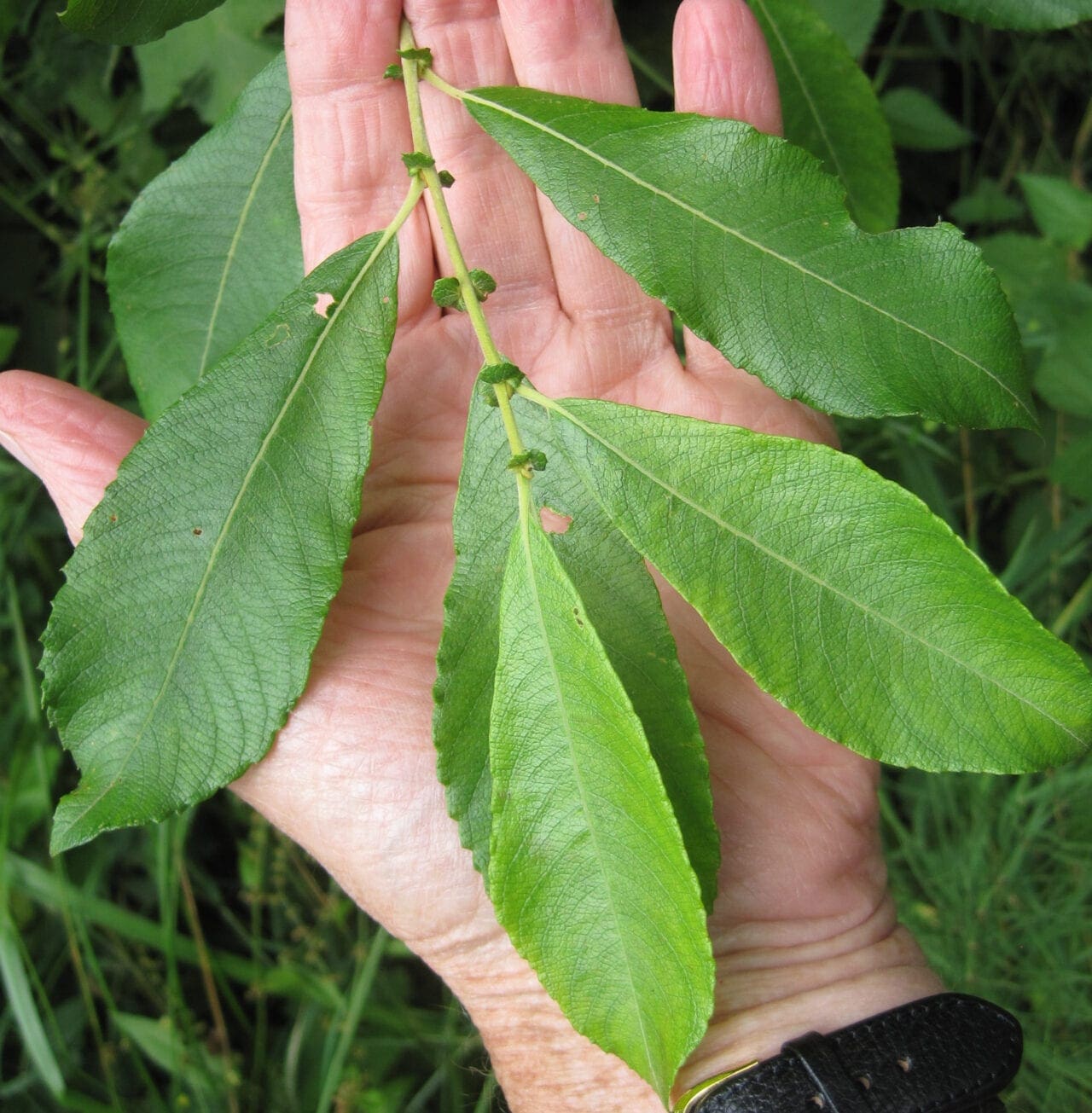
Willows Tree Guide UK Willow trees identification
Weeping willow trees are famed for their dramatic, elegant appearance. Their long, graceful branches "weep" into an arch, creating a round canopy that grazes the ground gently. Their narrow leaves are light green on top, with silvery undersides until they turn yellow in autumn. The bark is rough, gray, and ridged.

Different Willows Common Varieties Of Willow Trees And Shrubs
Willow Leaf Beetle - Willow leaf beetle larvae and adults feed on the willow tree leaves often to the point of skeletonization. Signs of a willow leaf beetle infestation include defoliation, brown crumbling leaves and metallic, greenish-blue oval beetles, less than 1/5 inches long, feeding in clusters from late May throughout the growing season.
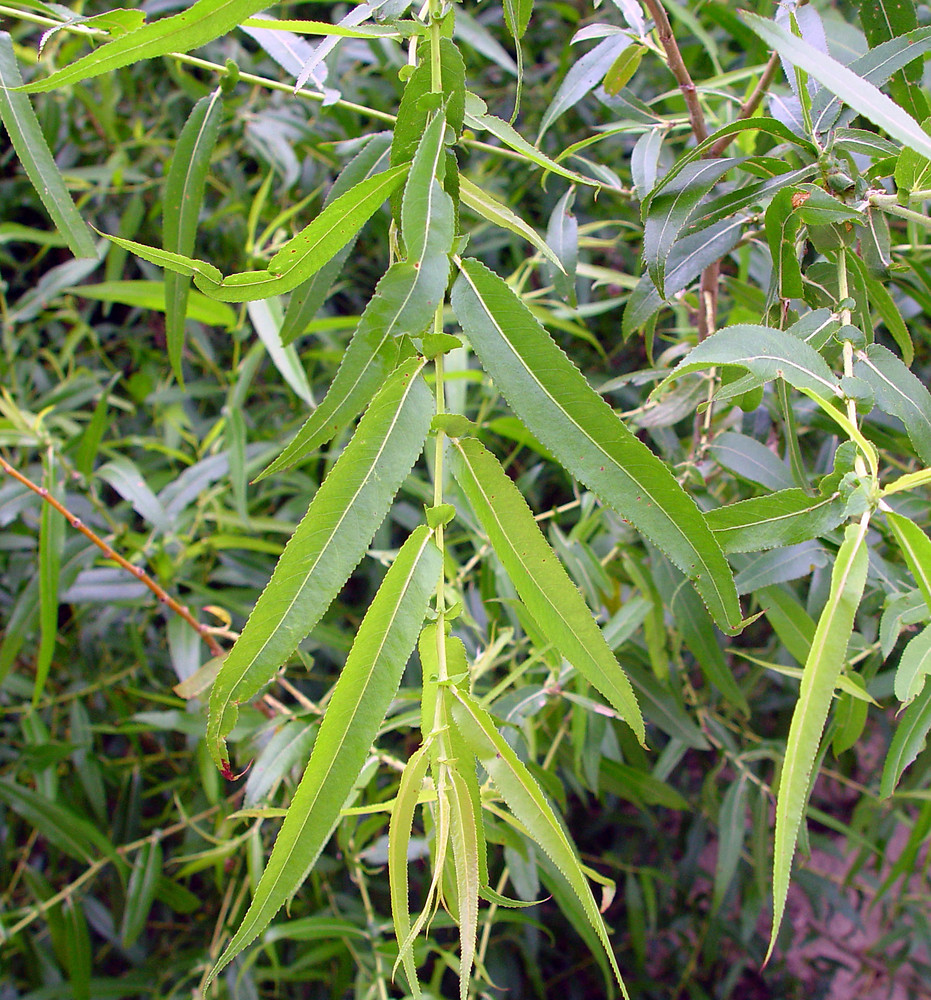
Salix nigra (black willow) Go Botany
White Willow. White willow is the tree most commonly used for medicinal extraction. Native Americans boiled the leaves and chewed the bark for a variety of ailments. Tea and poultices made from willow leaves were used to relieve digestive problems, fevers, minor pains, toothaches, arthritis, gout, headaches and rashes. Video of the Day.
:max_bytes(150000):strip_icc()/weeping-willow-trees-salix-babylonica-3269357-03-c5ad00b3bd024a95a5ff1753cb7dc295.jpg)
How to Grow and Care for a Weeping Willow Tree
A willow oak tree is identified by its leaves, bark, growth habit, and acorns. The stately willow oak has a rounded to pyramidal crown with smooth, leathery willow-like leaves with tapered ends that turn brownish-yellow in the fall. The medium-sized tree has grayish, fissured bark and small dark brown oval acorns.
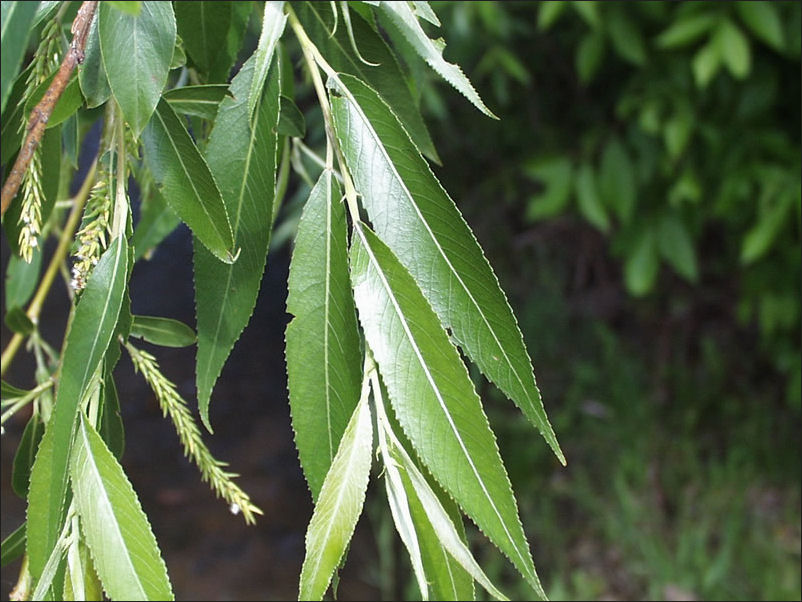
Black Willow (Salix nigra) Great Plains Nursery
Weeping Willow Leaves. Leaves of the weeping willow tree are long and linear, lanceolate in shape, and arranged alternately. The slender leaves have a light green color on the upper side and a grayish-green or glaucous hue on the underside. They feature smooth and narrow surfaces with serrated edges. Weeping willow leaves are approximately 3 to.
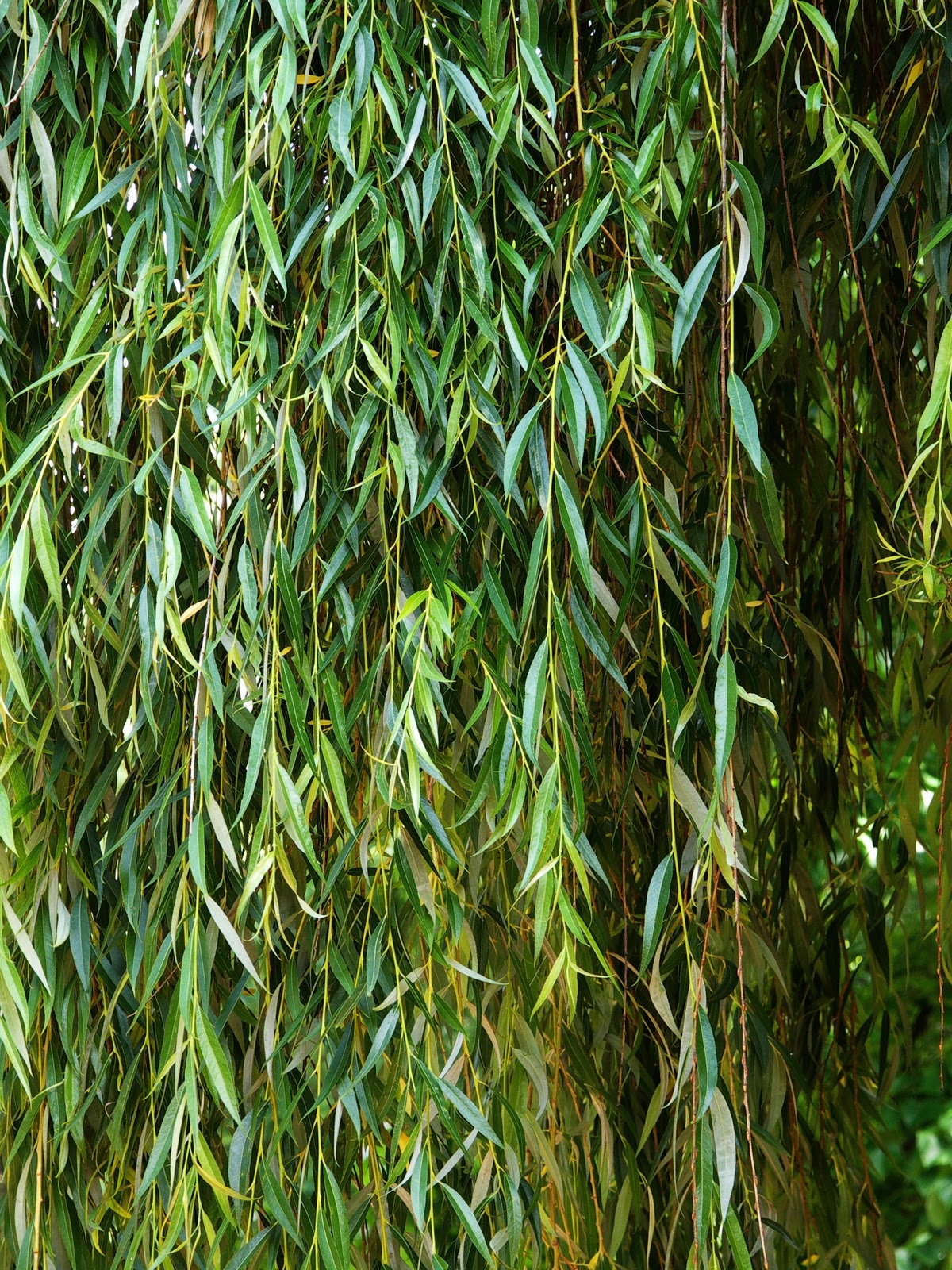
AmyluvsTrees Foliage Friday Willow Trees
The purple osier willow is a shrub that has purple stems and blue-green leaves when the plants are juveniles. It can handle some shade and dry soil. It is normally planted in order to control erosion along streams and lakes. It can also be planted as a hedge. The attractive flowers and stems can be used in crafts.
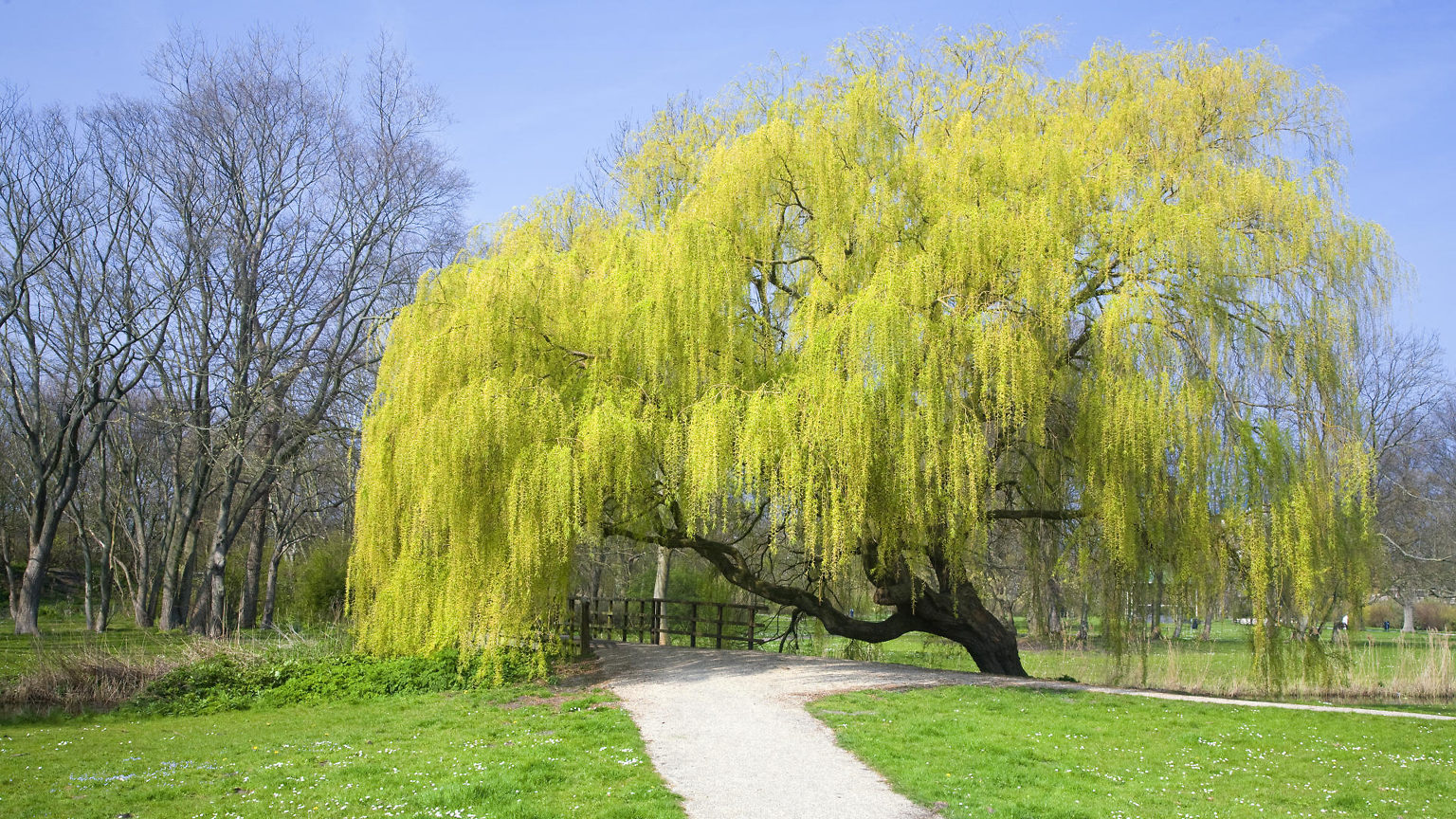
Weeping Willow Tree Guide Planting & Care Tips for Willow Trees
The underside of the leaf is silver-gray. Crack Willow The leaves of Crack willow are lanceolate, up to 16 cm (6.3 in) long and 2 - 3 cm (0.8 - 1.2 in) broad.
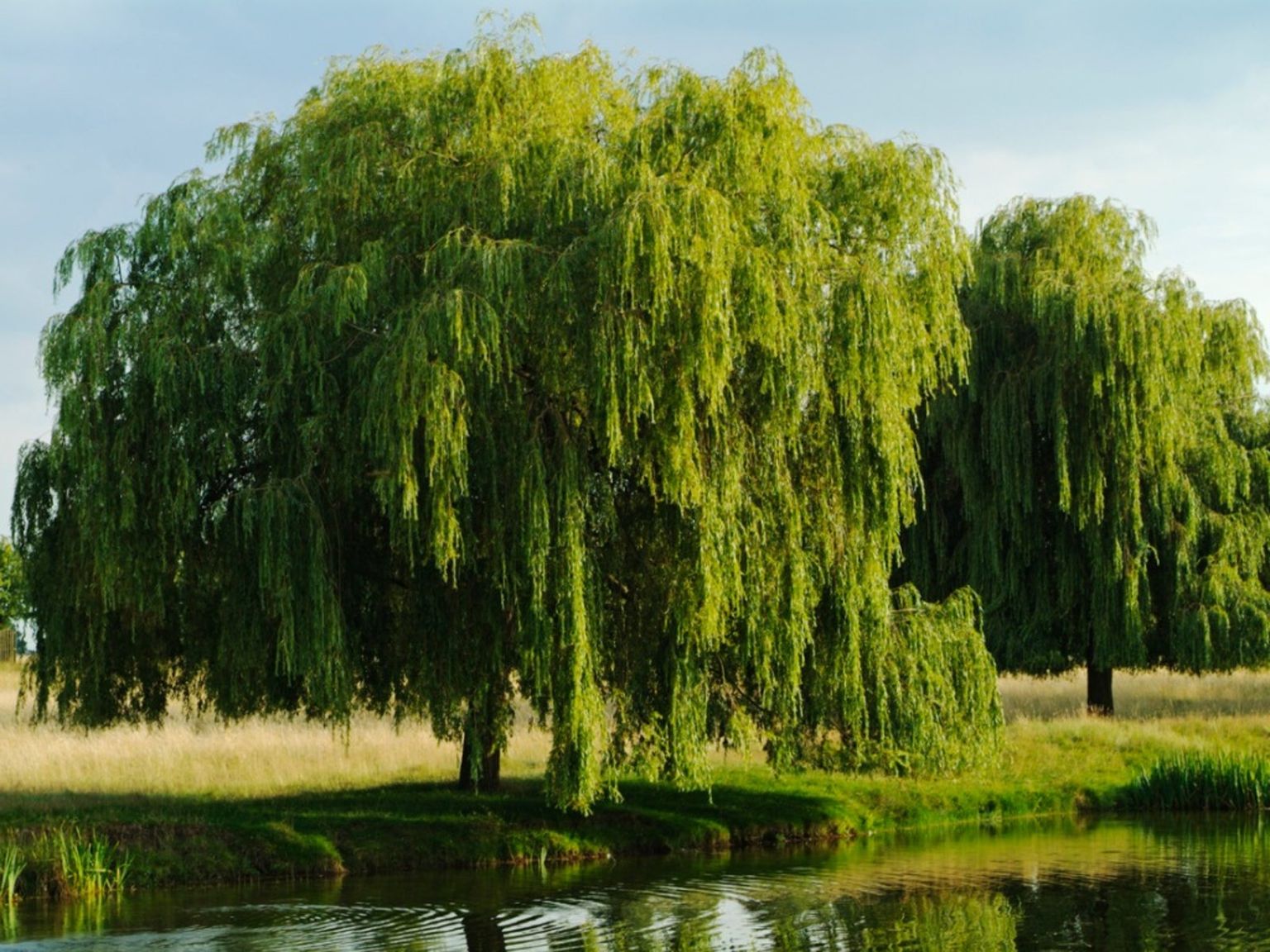
Willow Tree Care Tips For Planting Willow Trees In The Landscape
It is a small multi-stemmed tree or shrub, growing 6-36 feet (2-12m). Its leaves are smaller than some of the other willows, only 1-3 inches (3-8cm), rounded or pointed at the tip, widest above the middle, tapering to a narrow base.. National Register of Big Trees. Sitka Willow Salix sitchensis Sanson ex Bong. (SAY-licks sit-CHEN-sis)

My willow in autumn heatherkellyblog travel with me and wonder at
The statement-making willow tree is known for its long, flowing branches and slender leaves. Beautiful fall colors, ground-sweeping branches, and bright green foliage can make an instant.

Willows Tree Guide UK Willow trees identification
Salix alba, commonly referred to as thewhite willow is a medium-sized to large deciduous tree growing up to 10-30 m tall, with a trunk up to 1 m diameter and an irregular, often-leaning crown. The name derives from the white tone to the undersides of the leaves. The bark is grey-brown, and deeply fissured in older trees. The shoots in the typical species are grey-brown to green-brown.

White Willow (Salix alba) British Trees Woodland Trust
Salix is a genus of shrubs and trees belonging to the willow family, Salicaceae.Growing in an abundance of shapes and sizes, it includes approximately 400 species worldwide. Willows are a sight to behold with their graceful swaying in the wind, lush foliage, and deep roots that connect to the earth.
:max_bytes(150000):strip_icc()/YellowWillowFlickrMattLavin-56a98d045f9b58b7d0fca3fb.jpg)
12 Common Species of Willow Trees and Shrubs
Identifying Features of the Peachleaf Willow. Peachleaf Willow is a medium to large-sized tree with yellow to gray-brown hairless branches and yellow-brown, gray-brown, or red-brown hairless twigs. Petioles are 0.3 - 0.83" long and hairless to puberulent, typically without glands.
Trees of Santa Cruz County Salix babylonica Weeping Willow
willow, shrubs and trees of the genus Salix, family Salicaceae, mostly native to north temperate areas and valued for ornament, shade, erosion control, and timber. Salicin, source of salicylic acid used in pain relievers, is derived from certain willows. All species have alternate, usually narrow leaves and catkins, male and female on separate trees; the seeds have long, silky hairs.

Weeping_Willow_leaf Halalop
The most common type of willow tree leaf is the salix alba, which is long and narrow with a slightly pointed tip. These leaves are usually green in color and have a velvety texture. Another common type is the salix babylonica, which has a more rounded shape and an even more velvety texture than the alba variety. The babylonica variety also.